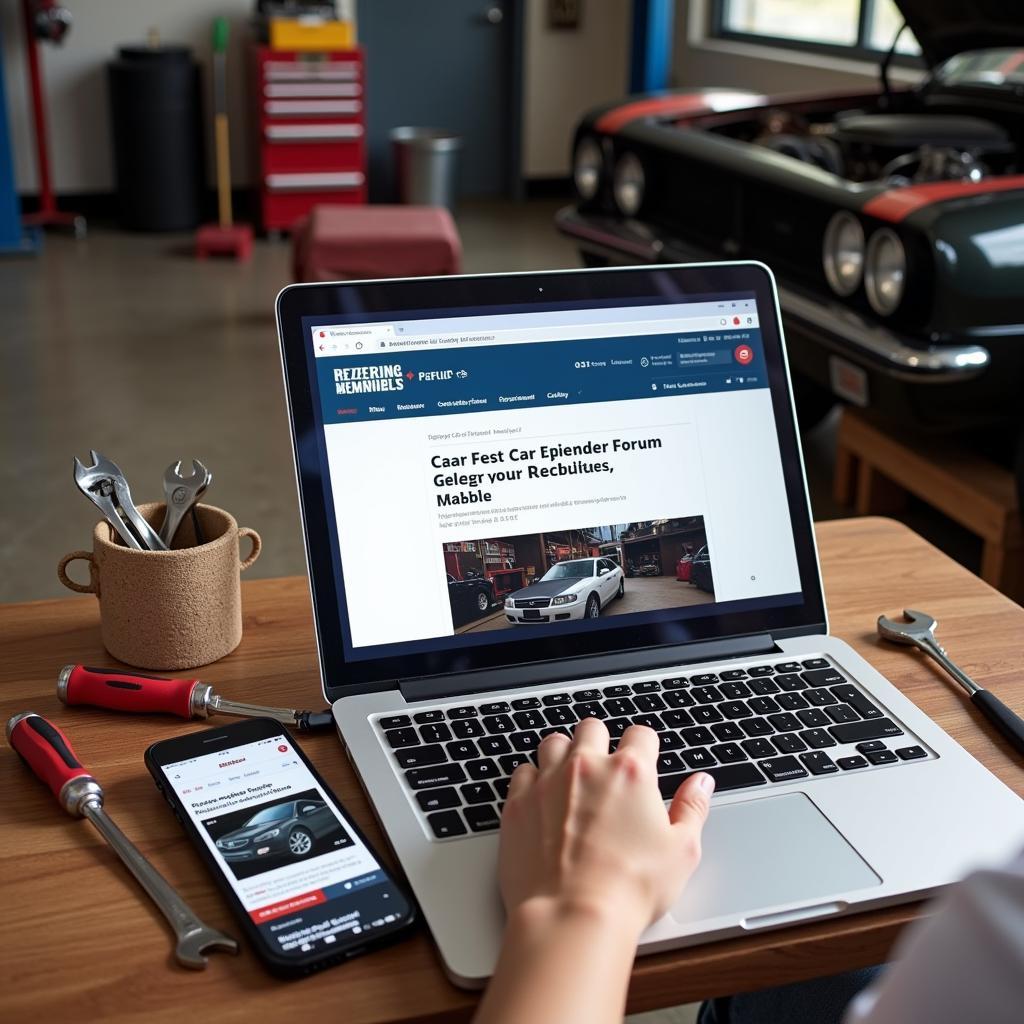Scuffs on your car bumper are an unfortunate reality of driving. Whether it’s a minor scrape from a parking mishap or a more noticeable mark from a light impact, knowing How To Fix A Scuff On A Car Bumper can save you time and money. This guide will walk you through the process, from assessing the damage to achieving a professional-looking repair.
It’s important to first identify the severity of the damage. A light scuff that only affects the clear coat or the top layer of paint can often be addressed with simple techniques. Deeper scuffs that penetrate to the primer or the plastic bumper itself require a more involved approach.
Assessing the Damage: Is it Just a Scuff or Something More?
Before you begin, thoroughly clean the affected area with soap and water. This will remove any dirt or debris that might interfere with the repair process. After cleaning, examine the scuff closely. If you can feel the scratch with your fingernail, it likely requires more than just a polish.
How to Fix Light Scuffs on a Car Bumper
For minor scuffs, you might be able to get away with using a rubbing compound. Apply a small amount of rubbing compound to a clean microfiber cloth and gently rub it onto the scuffed area in circular motions. You can find out more about fixing light scratches in car paint on our website. This can help remove minor imperfections and restore the shine to your bumper. Remember to wax the area after using rubbing compound to protect the newly polished surface.
Repairing Deeper Scuffs: A Step-by-Step Guide
If the scuff is more substantial, you’ll need to use a touch-up paint pen or spray paint specifically designed for car bumpers. Here’s how to fix a scuff on a car bumper that goes deeper than the clear coat:
-
Clean and Prepare: Clean the damaged area thoroughly with soap and water and allow it to dry completely. Lightly sand the scuffed area with fine-grit sandpaper to create a smooth surface for the paint to adhere to.
-
Prime (If Necessary): If the scuff has reached the plastic of the bumper, apply a thin coat of automotive primer to the affected area. Let it dry completely before proceeding.
-
Apply Touch-Up Paint: Apply several thin coats of touch-up paint, allowing each coat to dry before applying the next. It’s better to build up the color gradually than to apply one thick coat, which can lead to drips and an uneven finish. You can learn more about fixing cars at home pa on our dedicated page.
-
Clear Coat: After the touch-up paint has dried completely, apply a thin coat of clear coat to protect the paint and restore the shine. Consider reading our guide on how to fix a small scratch on car for additional tips.
-
Sand and Buff: Once the clear coat is dry, lightly sand the area with very fine-grit sandpaper to blend the repair with the surrounding paint. Follow up with polishing compound and wax for a seamless finish. Dealing with other cosmetic damage? Check out our guide on how to fix cosmetic damage on car.
When to Seek Professional Help
While many bumper scuffs can be fixed at home, some require professional attention. If the damage is extensive, involves cracks or dents, or if you’re not comfortable with DIY repairs, it’s best to consult a professional auto body shop. If you need to fix scratch car front bumper, you can find helpful resources on our website.
Conclusion
Fixing a scuff on a car bumper can be a straightforward DIY project if you follow the right steps and assess the damage accurately. By addressing the scuff promptly and using the appropriate techniques, you can restore your bumper’s appearance and protect it from further damage. For more assistance or for professional repairs, contact AutoTipPro at +1 (641) 206-8880 or visit our office at 500 N St Mary’s St, San Antonio, TX 78205, United States.





Leave a Reply